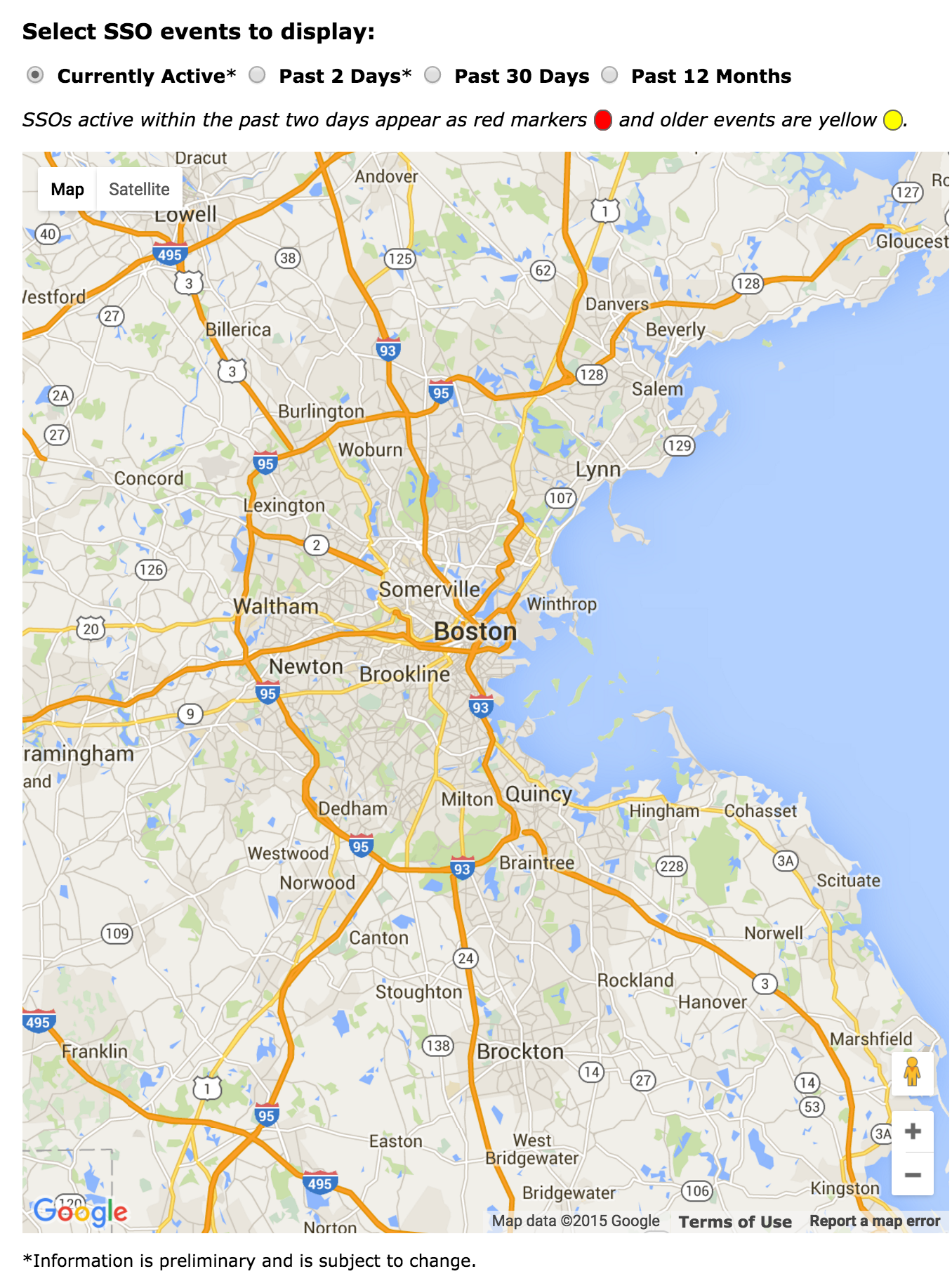Massachusetts Water Resources Authority
PRESS RELEASE
Date:
December 22, 2015
Contact:
Ria Convery
(617) 788-1105 Ria.Convery@mwra.com
New MWRA Web Page for SSO Reporting
The Massachusetts Water Resources Authority has created a new web page to report sanitary sewer overflows (SSOs). SSOs can occur on infrequent occasions when the capacity of the sewer system is exceeded, usually due to extreme conditions such as heavy rainfall, or an obstruction or break in sewer lines. During such events, flow may be discharged to local receiving waters without treatment, as a last resort to reduce the risk of sewage backing up into homes and businesses. Public health officials recommend avoiding contact with receiving waters for up to two days after SSO discharges have ended. |
||
### |
Follow us |
Updated
December 22, 2015
